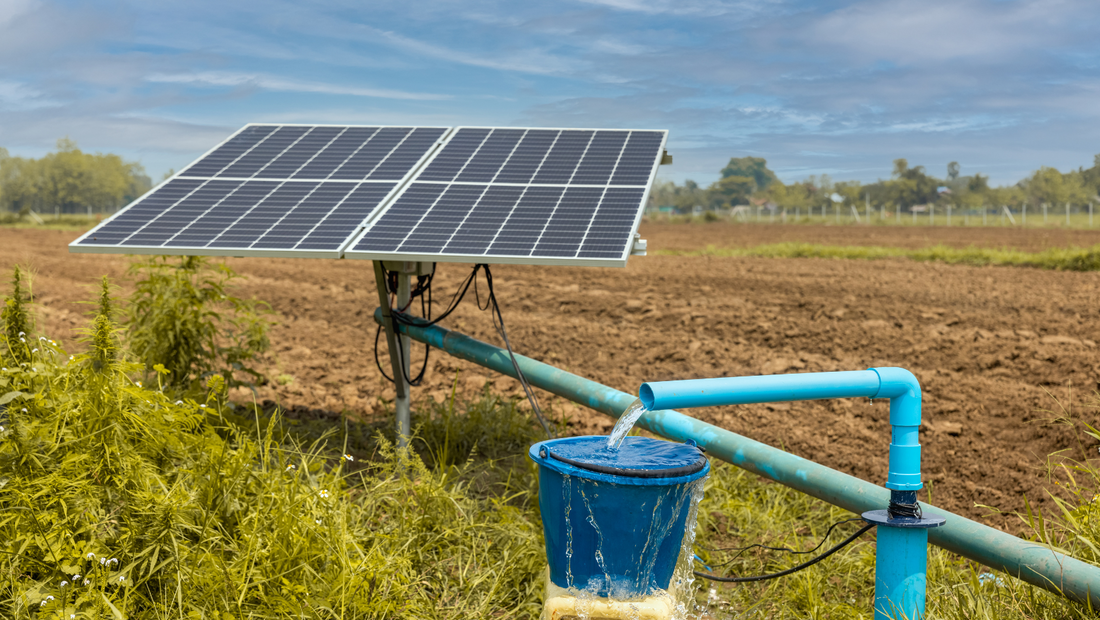
Solar Power on the Farm: Harnessing the Sun for Irrigation and Beyond
Share
For generations, Indian agriculture has been intimately tied to the rhythms of the monsoon. Yet, in a land increasingly prone to erratic rainfall and diminishing groundwater levels, coupled with the rising costs and unreliable supply of conventional electricity, farmers are turning to a brighter, more sustainable solution: solar power. Particularly in sun-drenched states like Rajasthan, where solar radiation is abundant, harnessing the sun for irrigation and other farm needs is proving to be a game-changer, offering a path to reduced costs, increased productivity, and enhanced energy security.
The Promise of Solar Pumps for Irrigation
At the forefront of this solar revolution in agriculture are solar water pumps. These systems utilize photovoltaic (PV) panels to convert sunlight directly into electricity, powering pumps that draw water from borewells, ponds, or canals for irrigation. The benefits for farmers are manifold and transformative. Firstly, they offer significantly lower operating costs. Once installed, the "fuel" – sunlight – is free, eliminating recurring expenses associated with diesel generators or fluctuating electricity bills. This is a massive relief for farmers constantly battling input costs. Secondly, solar pumps provide uninterrupted water supply. In remote or rural areas often plagued by erratic power cuts and low voltage, solar pumps offer a reliable, grid-independent solution, ensuring that crops receive timely irrigation, regardless of the grid's whims. This consistency leads directly to improved crop yields and reduced risk of crop failure.
Beyond economic advantages, solar pumps contribute to environmental sustainability. Unlike diesel pumps that emit harmful pollutants and contribute to carbon emissions, solar pumps are clean, silent, and eco-friendly, aligning with India's broader commitment to renewable energy and climate change mitigation. Their simple design, with fewer moving parts than conventional pumps, also translates to minimal maintenance and a longer operational lifespan, further reducing the financial burden on farmers.
Beyond Irrigation: A Spectrum of Solar Solutions
The application of solar power on farms extends far beyond just pumping water. Solar-powered cold storage units are emerging as vital solutions for perishable produce, especially in regions lacking robust supply chains. These units enable farmers to store their harvests longer, reducing post-harvest losses and allowing them to sell their produce at better prices when market demand is higher. Similarly, solar dryers offer an efficient and hygienic method for drying grains, fruits, and vegetables, protecting them from spoilage and contamination, unlike traditional open-air drying methods.
For livestock and poultry farms, solar power can be used for lighting, ventilation, and even water heating, improving animal welfare and farm efficiency. In areas with limited grid access, standalone solar microgrids can power entire farmhouses, small processing units, or community water purification systems, bringing energy independence and improving overall quality of life.
Installation and Government Support: Making Solar Accessible
While the initial investment in solar solutions, particularly solar pumps, can be substantial (ranging from approximately ₹70,000 for a 1HP pump to over ₹5 lakhs for a 10HP system, depending on type and quality), the Indian government has launched ambitious schemes to make them affordable. The Pradhan Mantri Kisan Urja Suraksha Evam Utthaan Mahabhiyan (PM-KUSUM) scheme is a flagship initiative offering significant financial assistance. Under this scheme, farmers can receive subsidies of up to 60% (30% central and 30% state government subsidy for general category farmers, with higher subsidies for special categories and regions) for installing standalone off-grid solar pumps. Component-C of the scheme also supports the solarization of grid-connected agricultural pumps, allowing farmers to use solar power for irrigation and sell surplus electricity back to the grid, creating an additional income stream.
Farmers interested in installing solar solutions can approach their state's renewable energy department or local solar companies, many of whom are active in Rajasthan (like those in Jaipur) and can assist with the application process for PM-KUSUM and other state-specific subsidies. These companies also provide guidance on choosing the right capacity and type of pump (submersible or surface), and handle the installation, ensuring optimal performance and long-term reliability.
The shift towards solar power in Indian agriculture represents more than just a technological upgrade; it's a paradigm shift towards sustainable, self-reliant farming. By tapping into the abundant energy of the sun, farmers are not only reducing their operational costs and ensuring consistent irrigation but also contributing to a greener future, truly living the spirit of "Jai Kisan, Jai Vigyan" – Hail the Farmer, Hail Science.
